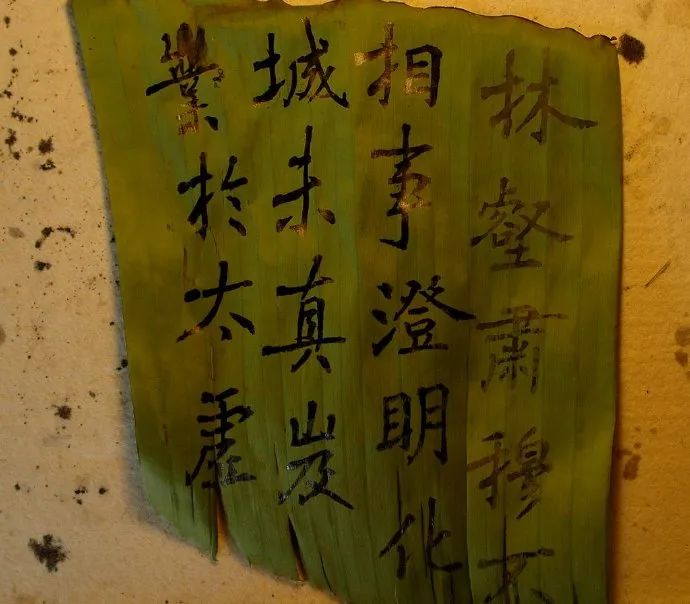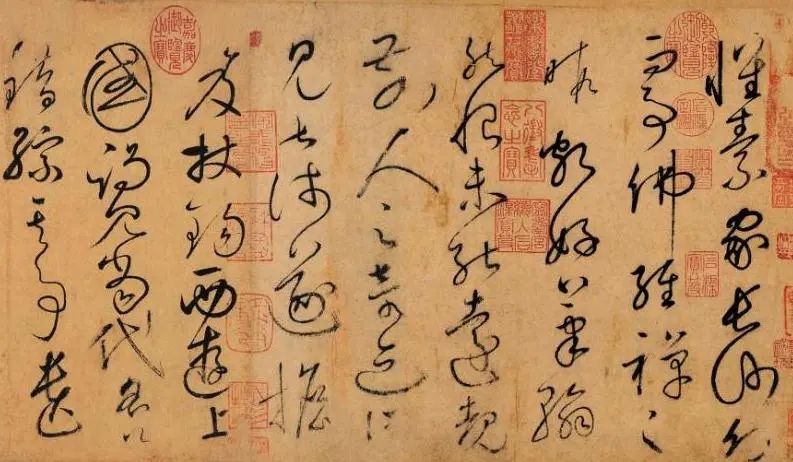Calligraphy is a unique artistic expression of the beauty of writing in China and neighboring countries and regions influenced by Chinese culture.
If you want to hone calligraphy to a certain level, it should be not only “skill within the hieroglyph”, but more “skill outside the hieroglyph”. This is a kind of development of one’s own qualities and self-improvement.
The so-called “mastery outside the hieroglyph” includes knowledge, endurance, character of a person, etc. Only by combining calligraphy with such aspects can you go beyond and understand the essence. This is why famous calligraphers of the past had remarkable morale and soul.
Calligraphy on over 10,000 banana leaves
The famous Tang Dynasty calligrapher, monk Huai Su, is also an example of great effort and diligence. Because he was poor and could not afford himself to buy paper, he used banana leaves for his daily calligraphy practice. Later, he plucked all 10,000 banana leaves he had grown, so he made a wooden plate, varnished it and used it to practice writing. Over time, the wooden plate had frayed from the brush.
Make full use of multiple rooms of persimmon leaves to practice calligraphy – Zheng Qian
Zheng Qian was a renowned scholar and calligrapher during the reign of the Tang Emperor Xuanzong of the Tang Dynasty. He had excellent knowledge. At a young age, he loved to write and draw, but he was sad as his family was so poor that he could not even afford himself to buy paper. What could he use to practice calligraphy?
It so happened that in the neighboring temple of Compassion and Mercy there were several rooms with persimmon leaves, so he moved to the temple to live there, and every day he took red persimmon leaves, used them as paper, diligently practicing calligraphy. Over time, he covered all the persimmon leaves with writing that occupied several rooms.
The diligence bore fruit, and Zheng Qian still succeeded after years of trial. He made great strides in calligraphy, painting and poetry. Tang Xuanzong saw his works, was amazed and called them “The Three Talents of Zheng Qian.” The predecessors said: “The scent of plum blossoms comes from extreme cold.” Doesn’t Zheng Qian’s story give us great inspiration?
During the Northern Song Dynasty, Ouyang Xiu was not only a master of prose, his hieroglyphs were also very graceful and strong.
When Ouyang Xiu was young, his family was very poor and they did not even have money for paper and brushes. Seeing that he was an easy learner, his mother began to teach him calligraphy in the sand using a sharpened reed. As a result of hard practice, he also achieved great results in calligraphy.
“From the very childhood I liked to do many things, but after reaching middle age, I gradually began to give up many things. I stopped doing some of them, because I was tired, I had to give up on something, because, despite the fact that I was not tired, I didn’t like it. Over time, the only thing for which the love became deeper and I was not fed up with was calligraphy. Writing helps me pass the time without getting tired”, he said. Therefore, “calligraphy can perfectly develop a strong character and moral integrity”, but it is more than just the development of character, moral integrity, long-term perseverance and continuous skill improvement. It is also the ability to summarize, and develop outstanding qualities: calmness, intelligence, determination, thinking and initiative. This is why calligraphers excel in other areas as well.



